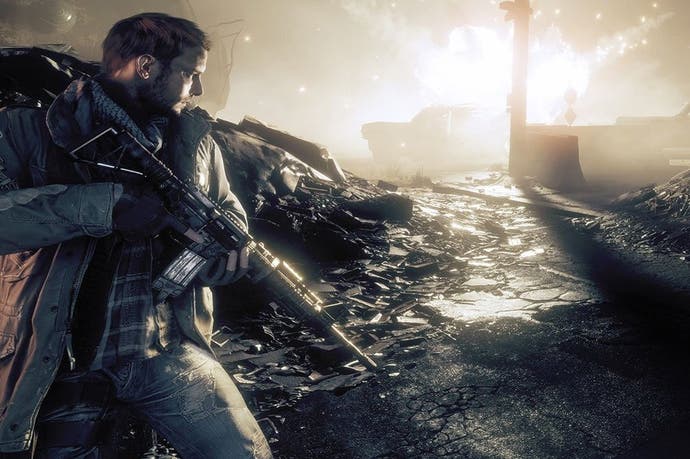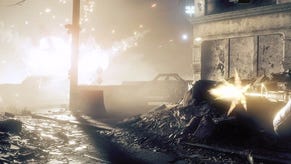Face-Off: Homefront: The Revolution
Guerrilla warfare between PS4, Xbox One and PC.
Homefront: The Revolution has seen much change over its turbulent four-year journey to release. Surviving the closure of publisher THQ, and also an ill-fated spell as Crytek's UK subsidiary (ending in missed wages for its staff), the reformed team at Dambuster Studios lives on to create an open-world shooter in place of the game's original, linear design. The Cryengine tech at its heart impresses: an updated build that brings back the deferred shading of Crysis 3, plus new weather effects. But it's also a project marred by optimisation issues, notably on console.
In terms of its visuals, both PlayStation 4 and Xbox One run at the equivalent of PC's high preset across the board, even including object and shadow quality. The exception to this is textures, where console editions match the maximum very high preset available to PC thanks to the RAM afforded to each console. It means we get parallax occlusion maps (POM) across brick walls and cobblestone roads, adding a 3D effect to surfaces across a wasted, futuristic Philadelphia.
Not everything is entirely even between the three. Xbox One falls short in a few choice areas where memory bandwidth is limited; its resolution is pruned back to a native 1600x900, while PS4 strikes a target 1920x1080 resolution. The post-processing setting is also dialled back on Microsoft's machine - removing a depth of field effect seen in the backgrounds of cut-scenes. Based on our PC testing, it's a taxing parameter, and one that perhaps affords Xbox One the extra wiggle room in frame-rates covered below.
Curiously, this upscaled 900p image is a bigger drawback to Xbox One's visuals than we'd expect, though there is an effective solution. Navigating the ruined subway carriages for example, metal rails show stair-step artefacts on the vertical axis (though curiously not horizontal) at its default settings. But enabling the temporal AA mode in the console settings menu completely solves this - an option that also boosts PS4's image clarity. Frame-rates aren't affected by the switch, and the only snag is a faintly visible ghost image that trails behind moving objects. Xbox One still lacks the absolute clarity of a 1080p image with this engaged, but it falls much closer to PS4, and it's worth using on all formats.
PS4 and Xbox One are otherwise equals in the rendering techniques used across the game, but PC reserves a few neat extras. Field of view (FOV) is set to 50, much like PC at its default, and lens flares are enabled too. However, motion blur is switched off on console, where PC offers several quality presets - plus a higher grade pass of SMAA 2TX to back its resolution output. There's even a built-in super-sampling option on PC, allowing the engine to render at higher resolutions and downscale back to 1080p for a more pristine image.
At very high settings, PC offers some other surprising additions. Shadows at this top preset produce clearer outlines, and it also enables dynamic self-shadows that go missing on PS4 and Xbox One. The console versions are inconsistent at their 'high' setting in this sense, and while walking in front of spotlights still produces large character shadows, in other cases they're absent. A separate 'shading' setting is also much improved on PC when maxed out, removing the striped, banding effect seen on the console form of ambient occlusion.
Otherwise, both consoles are light on compromise in their visual quality. PC only boasts slightly longer draw distances by comparison, but the game still holds up extremely well in the visual stakes on PS4 and Xbox One. The only other notable drawback is in reflections, where Philadelphia's neon lights are fully mirrored on PC at night, whereas consoles only factor in lights from geometry and street lamps. The density and richness of the city's busier 'green zones' translates to all formats, but for PC these extras sweeten the deal.


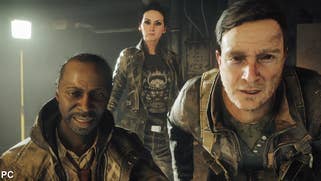
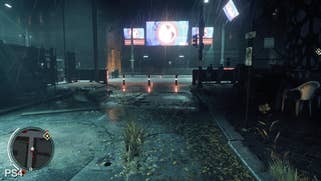
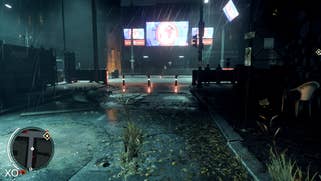
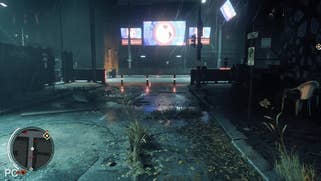







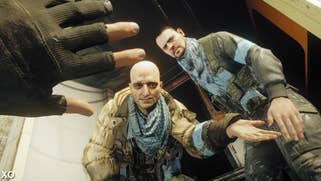

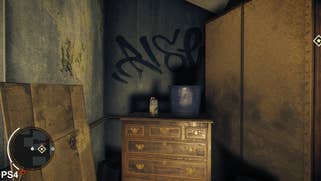
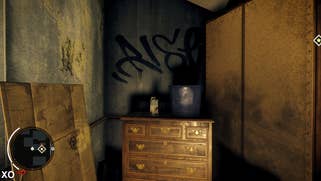

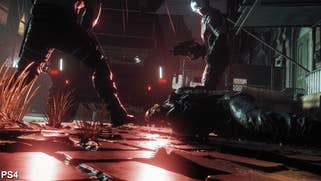
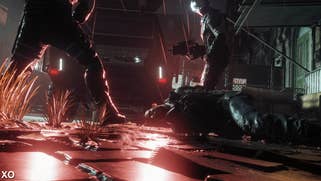
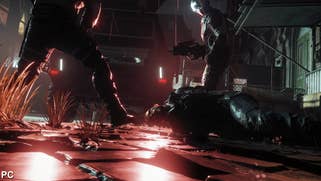
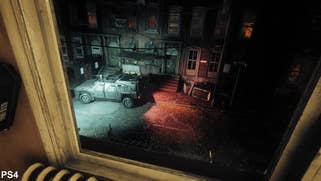


From a purely visual standpoint, it's one of the better-looking Cryengine titles seen on PS4, Xbox One and PC - a merit it deserves despite the poor frame-rates on console. It builds on the foundations set by Ryse with new atmospheric effects, adding a full time-of-day system, dynamic weather, and bringing back the wind simulation (in this case allowing power lines to sway over city streets). Dambuster Studios makes unique use of shaders for reflections too, which sees puddles form and evaporate over time, plus a volumetric fog effect that sweeps over the city - adding depth to the air.
These dynamics help settle the game as an open-world shooter, as opposed to a more dictated, linear experience. But as we've covered in our performance analysis this comes at a dear cost to frame-rate metrics on PS4 and Xbox One. We've ventured eight hours into the campaign on Sony's machine, and find frame-rates frequently struggling to hold 30fps. Open wastelands and indoor areas fare best - wavering between 27 and 31fps - but the main city hubs and battles have performance sticking much closer to the 20-25fps region.
Considering the state of most current-gen titles, Xbox One is in the unusual position here of pushing out higher frame-rates than PS4. In matching tests, PS4 falls behind by a 2-3fps margin, with tearing also added to the top of the screen. By comparison, Xbox One runs fully v-synced, and while it's a smoother experience in action, it's still not hitting the targets it needs to. In any shootouts against AI, neither version makes for a fun experience running like this; aiming is just too heavily affected by a sluggish visual response. It's a real shame.
PC offers a viable alternative, but there are caveats here too. We've played much of the game at around 60fps on both the GTX 970 and R9 390, but sadly the optimisation effort isn't entirely perfect. At high settings, very high textures, and 1080p, the game dips to 50fps and under during battles; to all intents and purposes, we can't achieve PS4-grade settings at a firm 60fps with either card.
Slotted into an i7-4790K PC clocked to 4.4GHz, plus 16GB of RAM, these cards still produce far more enjoyable results than either console version. In direct comparison, the R9 390 has an edge; cut-scenes run at a 3-7fps advantage on AMD's card - a consistent lead that initially holds above 60fps. However, the tides turn drastically during shootouts, where the GTX 970 pushes ahead by up to 9fps once alpha effects kick in. Both cards have a performance lead depending on the scene, in other words, but neither is up to muster for high settings, 1080p, and locking down 60fps at these moments.
To achieve 60fps with no dips whatsoever on the GTX 970 or R9 390, the extent of visual cuts needed is surprising. Even putting all settings at low produces performance that glances 58fps at peak load, though these moments are outliers to an overall readout of 60-80fps. Sadly, this low setting involves a sharp drop in effects quality, killing off shadows entirely, and dialling back post-processing by a visible degree. It's not the ideal way to play, leaving us in a tricky no-man's land between sub-60fps performance at high settings, or sub-console visuals.
It's also worth noting we had unusual frame-rate hitches with everything set to very high. Even on the Titan X, the game can suddenly tumble to the 0-20fps range, completely out of the blue while in an abandoned room, despite running at 30-45fps outdoors. It's very much unplayable at this setting, though switching everything back to high immediately clears this stuttering up. This affects all cards we've tried on the very latest drivers as of publishing, and it's another sign of the engine's lacking optimisation on PC.
For a final bout of tests we took to our budget PC for a spin. An i3-4130 paired with an overclocked GTX 750 Ti (adding 200MHZ to its core clock, and 400MHZ to memory) often proves a formidable opponent to PS4 and Xbox One, running at matched settings. In this case, setting it to high settings and 1080p gets us an eerily similar level of performance to PS4. It drops in a similar manner during cut-scenes to 20fps and under, while battles unfold at a comparable rate as well
Essentially, the Cryengine tech at this game's heart has always relied deeply on CPU power - and it's here rather than on the 750 Ti card that we're recording a bottleneck. In a bid for a perfectly locked 30fps, even dropping all settings to low, and the resolution to 900p doesn't give us a locked 30. Even in the best-case scenario, outdoors battles still cause our i3-4130 to hit 100% load on its logical cores, and we get sub-30fps dips.
It goes some way to qualify the situation on PS4 and Xbox One, where playback is typically in the 20-30fps range. Even if, in theory, both consoles ran at the lowest visual settings we see on PC, this budget PC testing shows the low core clocks on their Jaguar CPUs might still hit a performance ceiling around lots of enemy AI. This isn't a GPU issue, in other words, and it makes sense that we're seeing most presets set to high like this on PS4. Dropping these settings doesn't necessarily address the real point of pressure on either console - and indeed on our budget PC here.
Homefront: The Revolution - the Digital Foundry verdict
Despite its visual high points, the technology behind Dambuster Studios' first-person shooter is a blessing and a curse to the project as a whole. Put to work in a fully open-world title like Homefront: The Revolution, Cryengine is capable of producing striking visuals, especially around busier city sections with its clever new weather effects in play. However, it's hard to ignore the game's big shortfall in performance - a point that weighs heavily on its overall playability, where PS4 and Xbox One fall short of the desired 30fps target.
The impression is that the engine isn't an ideal fit for current-gen hardware, especially when put to work on a free-roaming design. More linear Cryengine titles like Ryse on Xbox One show the tech being used to hold 30fps for longer stretches, and we wonder how the team's original vision might have fared. For PC users, the chance to play at 60fps is a major game-changer compared to console - more so than the visual upgrades. The drawback is that neither the GTX 970 or R9 390 can produce a perfect 60fps lock at even medium settings, though the resulting experience is still far more enjoyable than on console.
While it's easy to dismiss Homefront: The Revolution out-of-hand based on its shaky performance, the frustration is that it betrays the flashes of quality on show. It's a game that sets a high bar for itself, at times matching the visual quality of Crysis 3, while ambitiously working to an open-world structure. Handed another franchise, and with the hindsight of a troubled first foray on PS4 and Xbox One, we hope this team's next project scales more adeptly across all formats.
